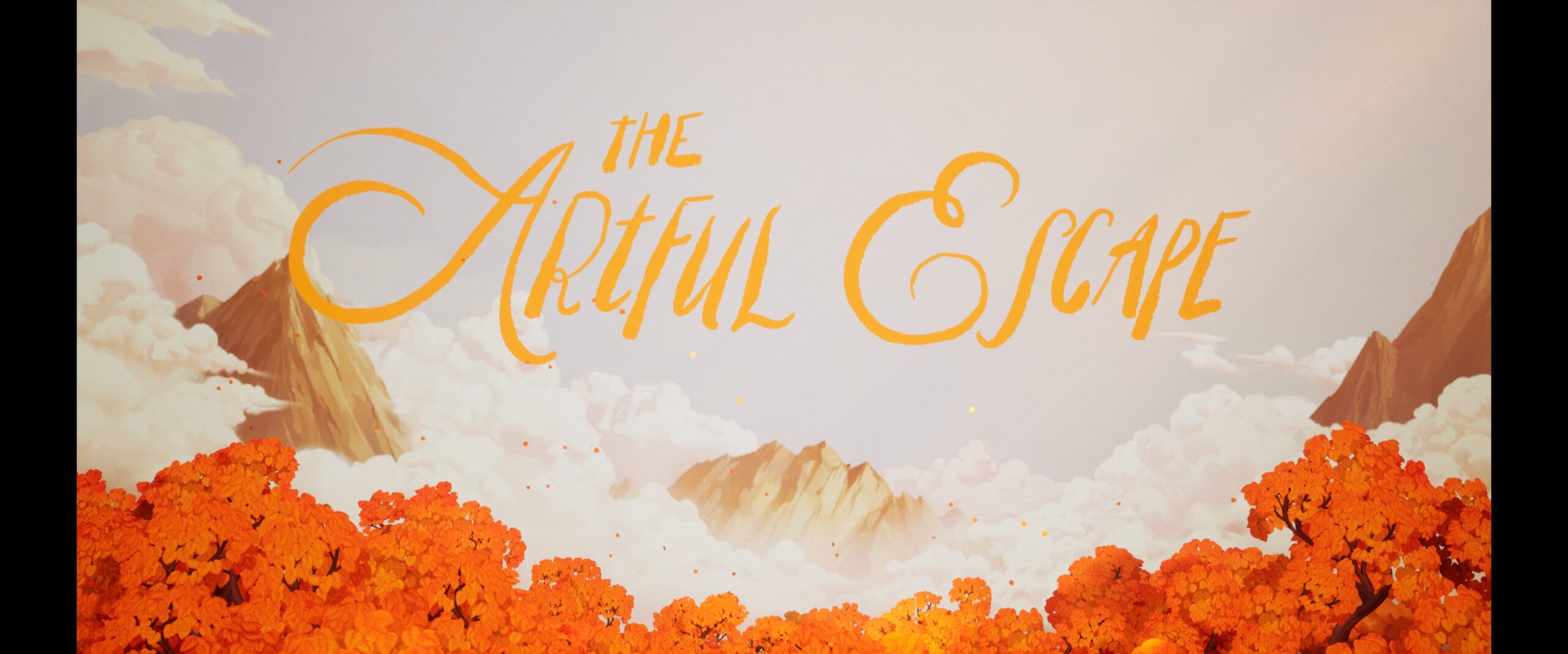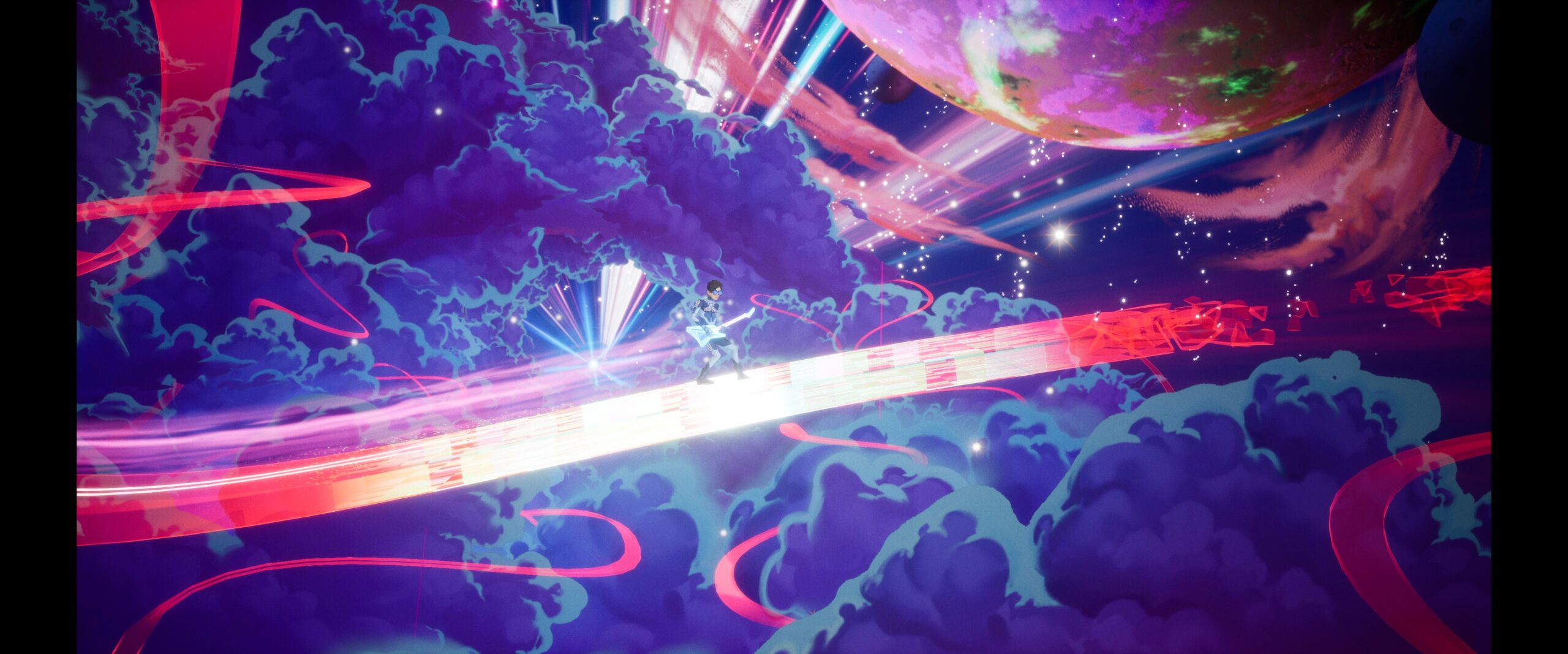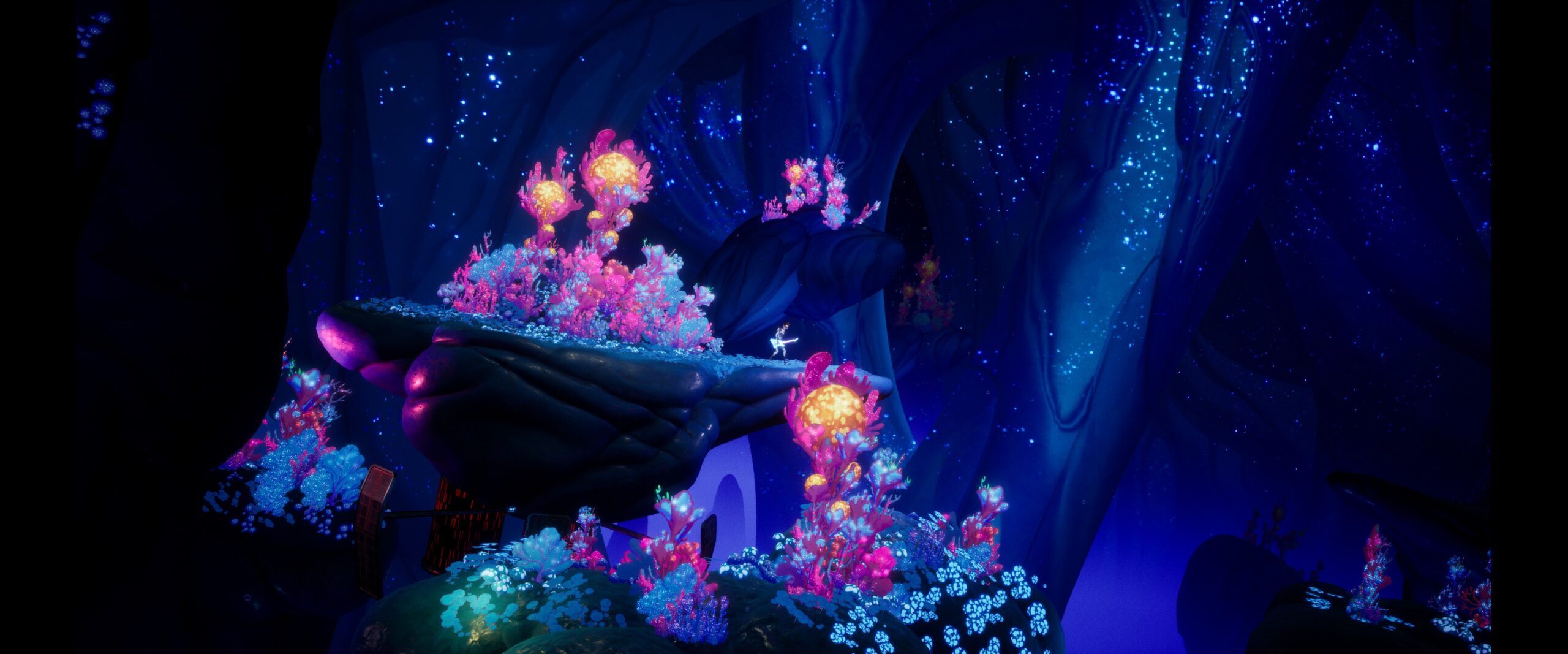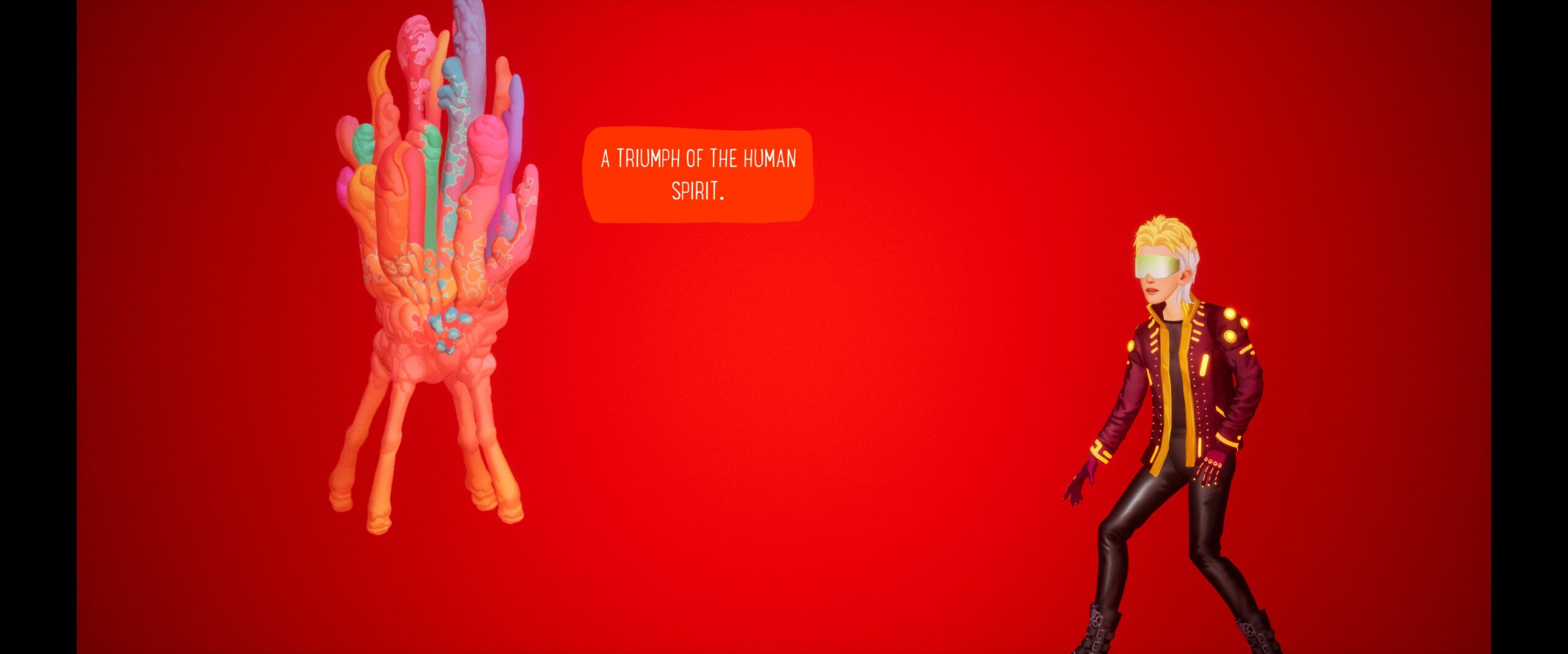It’s been almost a decade since Journey was released and you will still find its influence weaved throughout the indie game scene. This is a testament to what it represented at the time: an innovative title that pushed the boundaries of what games were, and what they could be. Many of sought to recreate the experience whole or in part, hoping to achieve similar levels of acclaim, but most will settle for recreating what I call “That Journey Moment”. It’s that point in the game where you start sliding down a sand dune, twisting your way through a dead city as the music swells and you get an overall sense for the scale of the world you’re in. It’s a great mechanic, often used as the culmination of your efforts in a level up to that point. It’s clear that this was an influence on the developers of The Artful escape, as the game uses this time and time again. You’d think I’d be chiding it for its overuse but, honestly, when you’re shredding your way through a psychedelic landscape of galactic rock opera proportions it honestly just ends up fading into the background.
The ridiculously neon background.

You are Francis Venditti, cousin to the folk-music legend Johnson Vendetti and upon whom all the hopes of the quiet mountain town Calypso reside. Your uncle was a superstar, someone who put Calypso on the map and soon they’ll celebrate the 20 year anniversary of his seminal album with a giant festival, one you’ll be making your debut performance at. However, in your heart, you know this isn’t the life that you want for yourself; carrying the hopes of a small town playing the kind of music that they expect you to, not the kind you want to play. That’s all set to change when you cross paths with one of the roadies, Violetta, helping setting up the after-party for your gig. She challenges you to push past your boundaries before taking off, but not before telling you to seek out Lightman’s place. That chance encounter sets the scene for your psychedelic reformation into the rock god you long to be.
The art and animation of The Artful Escape is absolutely stunning, ostensibly done to look like the Flash games of yesteryear but with all the graphic trimmings we’ve come to expect of modern day indie titles. Indeed it’s a blend of numerous different visual tricks to give you the impression of massive, deep and detailed environments all rendered onto a single flat plane. The colours are all bright, neon and oversaturated, very befitting of the psychedelic rock opera that the developers wanted to portray. It’s a testament to the games visuals that I took no less than 27 screenshots during my playthrough, all of them showcasing different environments with varied concepts, colour palettes and lighting effects. For the developers (Beethoven and Dinosaur) they should be proud to know they’ve set a new bar for this art style, one that I’ll be judging many games against for years to come.

The mechanics of The Artful Escape are pretty light on, tending more towards an interactive fiction styled experience more than any one particular genre. You could call it a puzzle platformer, since it has elements of both, but they’re so simple and forgiving that they’re almost not there. You could also argue there’s some elements of exploration to be had but there’s not much added to the world or story by doing so. Instead the game puts its focus on the overall experience of being the new up and coming galactic rock superstar, building out a vivid world filled with all sorts of psychedelic characters, creatures and plot mechanics that are honestly too numerous to go through in any semblance of detail. So whilst the game itself might be simple, the experience is anything but.
For the most part you’re going to be jamming your way through all the scenes, shredding on your holo-guitar as you make your way through the levels as they react to your playing. The interesting thing is that, for the most part, shredding while you move through each level is purely optional but it’s certainly the encouraged thing to do since you’re supposed to be broadcasting your performance to a galactic level audience as you do it. The mechanic simplisticity means you’ll be spending more time soaking in the game’s visuals and soundtrack than you will be figuring out the perfect timing for your jumps or how to solve a puzzle to progress to the next section.

To be sure there are puzzles, but they’re just a simple game of Simon where you’ll be copying a pattern of a particular animal in order to do your particular part. This is where the game’s utter lack of real gameplay does come into stark relief though, as even flubbing the patterns multiple times doesn’t appear to have any consequences, even when the setup to the particular challenge you’re facing is basically a life or death situation. However, given the game has a decent length even with it’s forgiving mechanics I can see why the devs opted for it; there’s just no reason to really punish the player when the focus is more on the music than anything else.
Which, don’t get me wrong, is great but it does mean that the game does tend to get a little repetitive after a not-too-long period of time. Thankfully The Artful Escape is broken up well into story beats that give you an opportunity to put it down and come back to it later without feeling like you need to power through to the next section. So whilst you could conceivably blow through this in one sitting I personally found it better to play for maybe an hour or so and then coming back to it later, feeling like I could appreciate the what it’s meant to be much better rather than focusing on its more rudimentary aspects.

Whilst The Artful Escape’s overall experience is relatively pain free there are a few little pieces that could be polished up. The platforming, whilst easy and forgiving, is a little janky in its implementation making some things a little more hit and miss than they need to be. The auto-save system, whilst good, doesn’t seem to save after some events that you’d expect it to, sometimes leading you to replay through certain sections again. This isn’t likely a huge deal for a lot of people but, as a newly second time round father with a little less time on his hands, it did mean that my need to drop the game at a moment’s notice and then have to replay a section again was a little more irritating than it needed to be, I felt.
The narrative is an interesting one, feeling like it’s meant to be interpreted in several different ways all at once in order to get the developer’s full intention. On the one hand, the majority of what you’re shown could just be the result of some fever dream brought on by the weight of expectations and there’s many out of the blue interjections in the game’s narrative that speak to this. On the other hand it’s just as easy to recount this as a literal account of events, eluding to a world much bigger and grander than anything we could imagine that’s just beyond the reach of us everyday people. One thing is for sure though, the game’s exploration of what it means to be true to yourself rather than the expectations of others is something I think we can all resonate with.

The Artful Escape sets a high standard for a kind of game that I don’t think many expected to ever exist: a psychedelic rock opera adventure that deals with real issues that we all face in our own travels. The standouts are most assuredly its visuals and incredible soundtrack, bringing near constant epic shredding backed by an incredible orchestral score. The core game is simple and forgiving, something that does make for a repetitive experience at times but is all done in aid of just having you enjoy the game for what it is. The story is one that can be enjoyed on multiple levels and whilst I’ll chide the developers for loudly setting up for a sequel I can’t say I’m not excited about the prospect of another instalment in this world.
Rating: 9.0/10
The Artful Escape is available on PC, Xbox One and Xbox Series X/S right now for $28.95. Game was played on the PC with a total of 4.1 hours playtime and 75% of the achievements unlocked.



